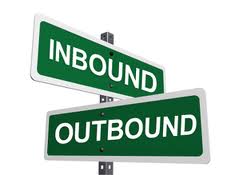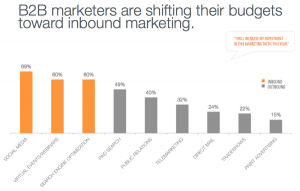 A marketers’ objective is to create demand for products and services. Demand is created by implementing several strategies; here we are about to discuss the most common ones –
A marketers’ objective is to create demand for products and services. Demand is created by implementing several strategies; here we are about to discuss the most common ones –
Inbound Marketing – This type of marketing is creatively drawing customers to your site or landing page. The concept uses opt-in email, eBooks, whitepapers, social media and SEO strategies to make your business stand out online and drive potential customers to your website. This is referred as “permission marketing” or “pull marketing”.
Advantages of inbound marketing
Inbound marketing draws consumers by enabling your business to be easily found via a search engine, social networking, and/or blog post. Additionally it aims to position you as a go-to resource that provides information to your audience and gauging your prospects interest.
Inbound marketing is not expensive.
Disadvantages of inbound marketing
Inbound marketing relies on producing good content, making sure it is visible, and having effective presence on the internet so that it can found by prospects.
Outbound Marketing – A traditional approach that is focused on pushing your message in front of an ideal customer. In the past marketing was straightforward and much less interactive. Televisions commercials, direct mailings, billboards and radio spots are typically examples of outbound marketing. The logic behind outbound marketing is simple; hit the target with enough frequency and they will eventually take your desired action.
Advantages of outbound marketing
Outbound marketing provides full control over the message: what is communicated, how it is communicated, and when it is heard, seen or read.
Disadvantages of outbound marketing
Its referred as interruption marketing for a reason! The receiver receives the message whether he or she wishes to or not, they are getting it anyways regardless of their desire to receive it
The objective of outbound marketing aims to reach a wide range of audience by means of reiteration: This is expensive.
According to Hubspot, B2B marketers offer their audiences useful information and tools to attract people to their site, thus making inbound marketing far more beneficial. The graph below clearly shows how marketing dollars are being spent to attract prospects.
Source: Hubspot, The 2012 State of Inbound Marketing
Which is better for small and medium businesses? And why?
A growing trend among marketing experts is to shift the attention from outbound marketing to inbound marketing for the following reasons:
Outbound marketing has taught us that customers filter out advertisements i.e. switch channels during commercials, delete spam email or discard direct mail without opening it.
Inbound marketing interrupts no one! Your business, products and services come up in the search engine results i.e. Google, Yahoo, Bing, or are posted by a friends on a social networking site i.e. Facebook, Twitter, or via a blog site. Its less intrusive and liked by customers since it requires gaining their permission advancing to the next step in the purchasing process i.e. a permission to send them an email newsletters, a white paper, an eBook, or a catalog.
Statistically inbound marketing maintains a low-cost advantage when compared to outbound marketing, providing efficient and affordable ways for small and medium business’ to acquire new leads.

